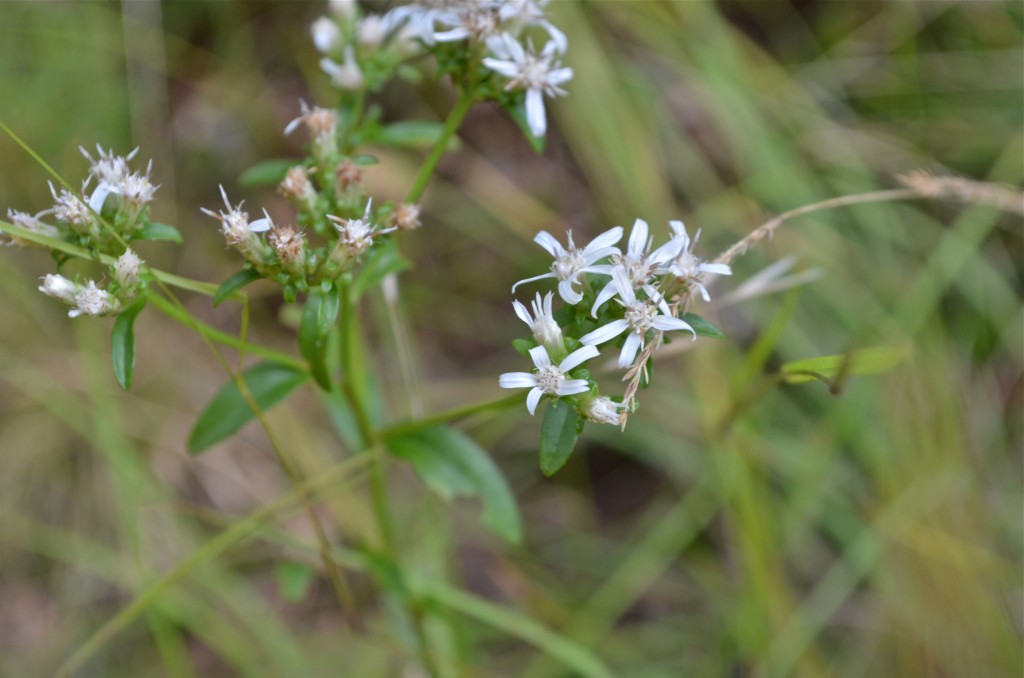 In a dry clearing at Noanet. Aster family. Native.
In a dry clearing at Noanet. Aster family. Native.
Toothed White-topped Aster (Sericocarpus asteroides)

Spikes of yellow flowers and toothed divided leaves with 5 leaflets. This is one of those herbs with a long recorded history of medicinal use, from ancient Greece through the Middle Ages in Europe, and was prescribed for ailments on this continent into the 19th century. A bit of folklore: if you hold it over someone’s head, it will induce a deep sleep until you take it away… Rose family. Native.
Agrimony (Agrimonia)
Bonus photos for A.F. Marilyn, who likes a little context with her wildflowers. This park has 6 meadows with bits of woods separating them (for the most part), and they all serve up different flora. Here is one of them:
Toward the end of the hike, there’s a little creek. It’s running low because it’s such a dry hot summer (about 95 during this walk), but here is Lucy getting all the satisfaction she can from an inch of water:
Back to Centennial when the temperature was about 95. I don’t have a closeup of this plant because it’s out in the poison ivy field, but it’s about 8 feet tall, and even from a distance you can see the distinctive leaf structure. They’re wilted from the heat and drought I presume, but you can see that it’s several leaves encircling the central stalks (“whorled leaves”). The only giant plant I can find with that leaf is Joe Pye Weed, usually pink, but evidently there are white variations. Who was Joe Pye? It seems he was a colonial-era New England herbalist/doctor (Native American, in some versions) who famously used this weed to stop an epidemic of typhus. Native. Aster family.
White Joe Pye Weed (Eupatorium)
A fascinating plant that presumably in past years I walked by blindfolded. A shrubby little tree growing with its feet in the Charles River. Has medicinal uses, but also considered toxic. Good for butterfly gardens! Coffee Family. Native.
Button Bush, Button-willow, Honey Bells (Cephalanthus occidentalis)
This is apparently a variety of Snowberry, a shrub in the honeysuckle family. Will have white berries. The inside of the berries looks like sparkling snow. A winter food supply for birds, but poisonous to humans. Native to North and Central America. (Photo by A.F. Aaron.) (He was kind enough to include a bonus Dogbane Beetle, Chrysochus auratus.)
Snowberry (Symphoricarpos albus)
Bonus bug munching on Milkweed leaves: it’s a Red Milkweed Beetle (Tetraopes femoratus)